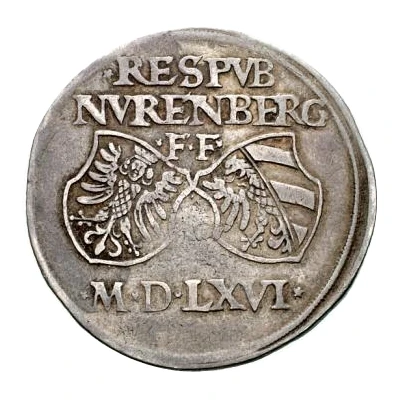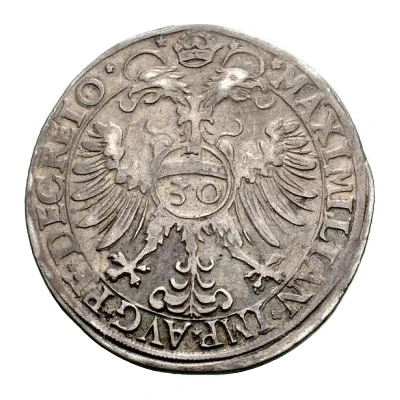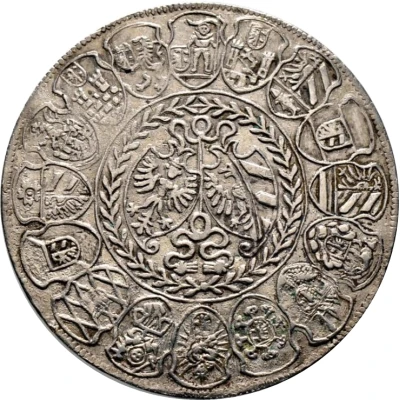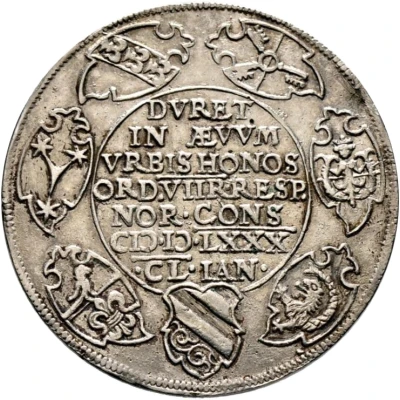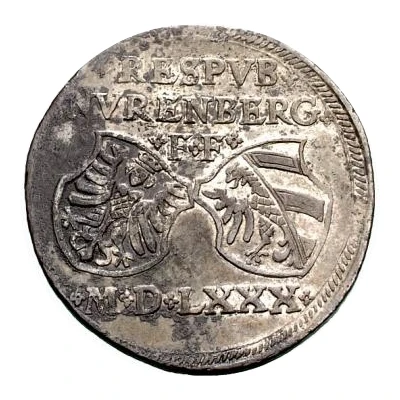
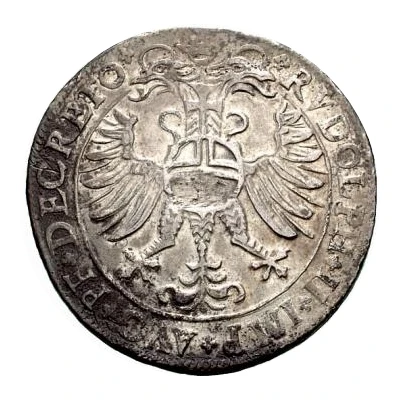

© Hess Divo
½ Reichsguldiner
| Silver (.931) | 12.08 g | 34 mm |
| Issuer | Free imperial city of Nuremberg (German States) |
|---|---|
| Period | Free City (1219-1806) |
| Emperor | Rudolph II (Rudolf II) (1576-1612) |
| Type | Standard circulation coin |
| Years | 1577-1584 |
| Value | ½ Guldiner = 30 Kreuzer |
| Currency | Reichsguldiner (1527-1619) |
| Composition | Silver (.931) |
| Weight | 12.08 g |
| Diameter | 34 mm |
| Shape | Round |
| Demonetized | Yes |
| Updated | 2024-10-05 |
| Numista | N#132376 |
|---|---|
| Rarity index | 100% |
Reverse
Crowned imperial eagle, '30' in orb on breast.
Script: Latin
Lettering: RVDOLPH. II. ROM. IMP. AVG. P. F. DECRETO.
Interesting fact
One interesting fact about the ½ Reichsguldiner coin from the Free Imperial City of Nuremberg is that it was minted during a time of great economic and political change in the German States. The coin was introduced in 1577, just a few years after the end of the Holy Roman Empire and the beginning of the German Renaissance. This period saw a significant increase in trade and commerce, and the need for a standardized currency that could be used across the different states. The ½ Reichsguldiner coin was one of the first attempts to create a standardized currency that could be used across the German States, and it paved the way for the later introduction of the Reichsthaler, which became the standard currency of the German States in the 17th century.
